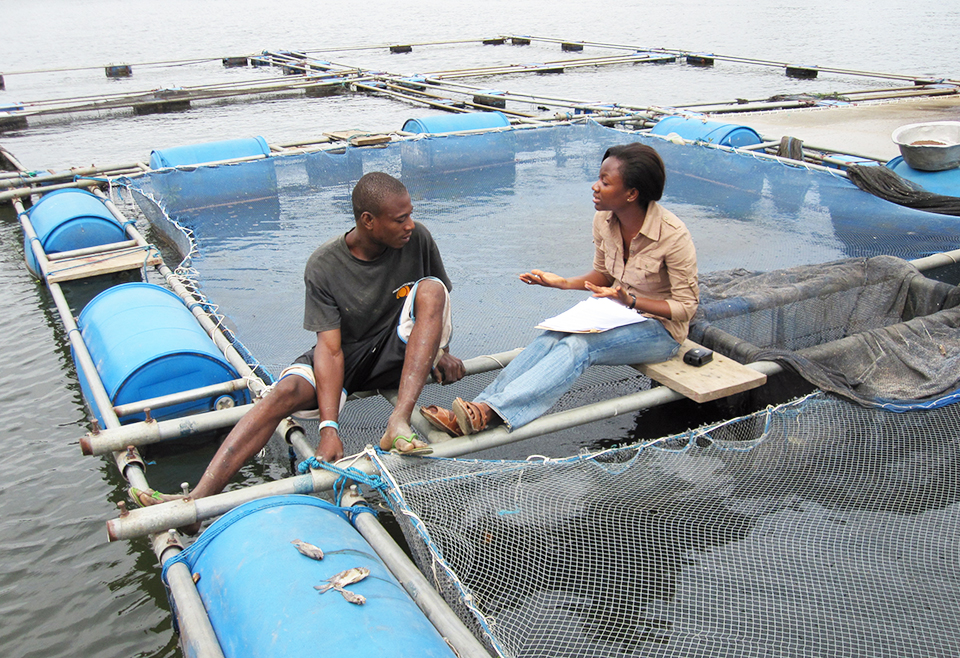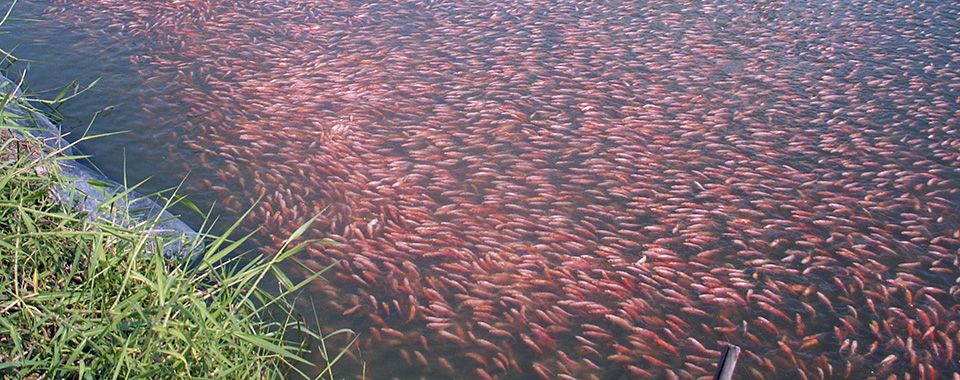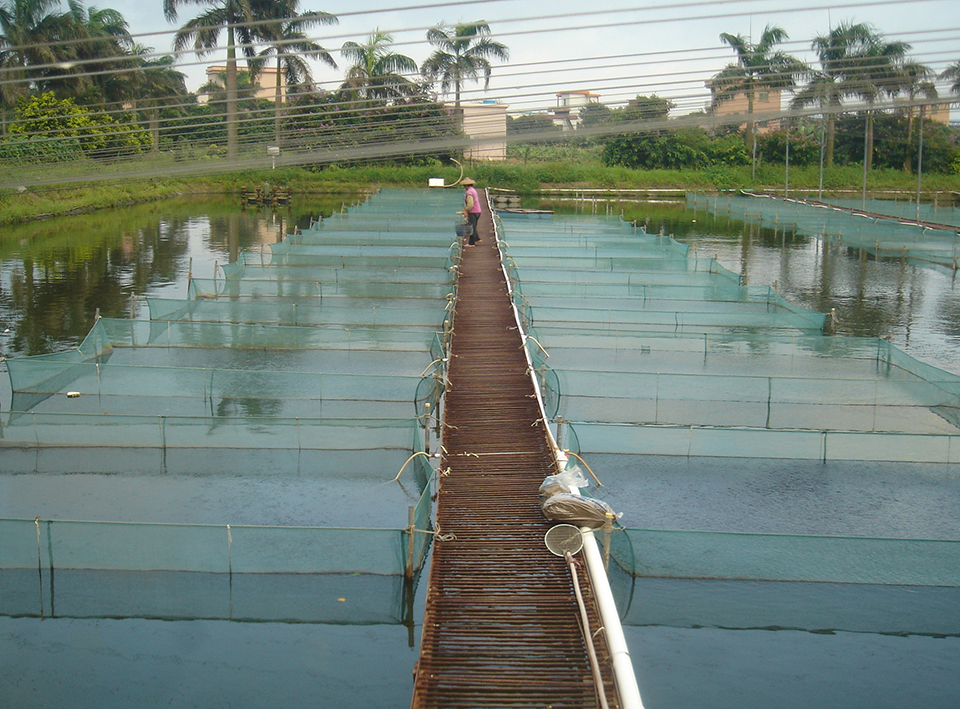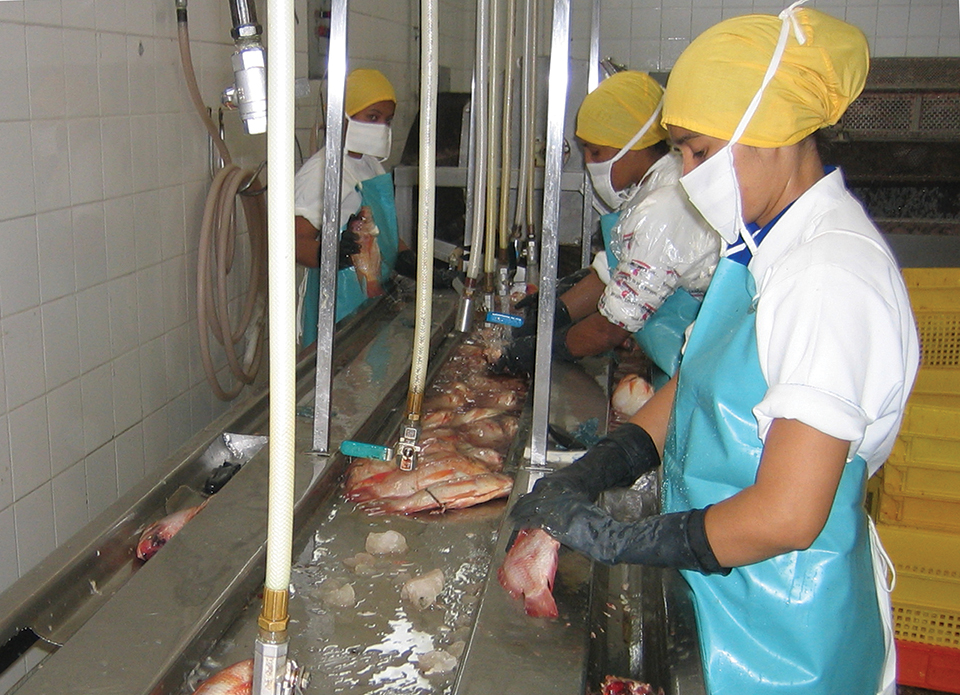Hormone treatment a safe practice if performed correctly

In many species of cultured fish, females grow more than males and mature later. Sex-related differences in growth and sexual maturation can be detrimental to modern aquaculture practices because they can limit or decrease production.
Controlling the proportions of sexes in production stocks to overcome these problems can be easily achieved because the process of gonadal differentiation is generally very labile in fish. This process is naturally controlled by steroid hormones, androgens, and estrogens, which the developing gonads themselves produce. It is thus possible to make a batch of fish develop only into the desired sex, usually females. In aquaculture, this is known as sex control.
Hormonal treatment
To masculinize fish in those few cases where males are the faster-growing sex – in tilapia, for example – sexually undifferentiated alevins can be treated with androgens known as “male hormones.” However, to feminize fish – which is the case in most aquacultured species for which controlling sex is advantageous (eels, carp, salmonids, catfish, sea bass, flatfish) – estrogens or “female hormones” can be used. There are two methods to produce all-female stocks: indirect feminization with androgen treatment and direct feminization with estrogens.
Indirect feminization
In the indirect method of feminization, sexually undifferentiated fish are first masculinized with an androgen treatment. Androgens do not affect genetic males but sex-reverse genetic females. Thus, a genetic female treated with androgens will develop as a male and have testes capable of eventually producing sperm.
However, this treatment leaves the sex chromosomes unaffected. Genetic females will remain so in that their sex chromosomes will be XX, regardless of the androgen treatment. If, in the next generation, eggs obtained from normal females (which always carry the X chromosome) are fertilized with sperm from the genetic females turned into males (which also carry the X chromosome), all-female offspring will result. This is the basis of the indirect method of feminization.
The advantage of this method is that fish that reach market have never been treated with hormones – only their parents were, and for a short period of time. The major inconvenience is that setting up the methodology – masculinizing a sexually undifferentiated batch and identifying the males that are, in fact, genetic females to be used as sperm donors to produce the second generation – is costly and time-consuming. In addition, in order to work, this methodology requires the target fish to have a female XX and male XY system of sex determination, which is not the case in many species.
Direct feminization
Direct feminization involves treating a batch of sexually undifferentiated fish with estrogens. If performed correctly, which is not as straightforward as it may sound, this results in the production of an all-female stock in a single generation. This is the most commonly used method of feminization for its simplicity. In many species, it results in increased production.
However, the fish thus produced have been treated with sex hormones, which can make producers and consumers reluctant to commercialize and consume the fish. Nevertheless, as explained below, there is scientific evidence that proves treating fish with hormones for purposes of sex control does not present any risk for the fish, the operators who administer the treatment, the environment, or the final consumers.
Natural estrogen
The hormone used to feminize fish is the sex steroid estradiol (E2), the major estrogen produced by all vertebrates from fish to humans. This naturally occurring estrogen is sufficiently potent to feminize many species of fish if applied correctly. Therefore, there is no need to use potent synthetic estrogens such as diethylstilbestrol (DES) or ethynylestradiol (EE2). Their use should be discouraged or even prohibited.
Short treatments
Effective E2 treatments for direct feminization can be as short as hours or, at the most, three months. Taking into account that these treatments must be administered when fish are very small and still sexually undifferentiated, this means the feminization treatments are finished many months – and often years in many species – before the fish are marketed.
Therefore, not only are fish treated with a hormone they naturally produce, but the treatment is terminated so far in advance of marketing that there are no residues present. In fact, several studies have demonstrated that essentially all the administered hormone is cleared in two to three weeks after the end of the treatment.
Low doses
Fish have a labile period during which the sexually undifferentiated gonads are most responsive to the effects of administered E2. If this period is scientifically determined, then effective dosages for feminization can be very low.
To compare, the intake of EE2 for women who take the contraceptive pill is in the range of 30 to 50 μg per day. To ingest the same amount of the natural E2, one would have to consume tens or hundreds of kilograms of treated fish every day.
Environmental concerns
Another aspect that can be of concern is the environmental impact of using sex steroids such as E2 in aquaculture. British researchers have calculated that the total environmental input resulting from the feminization of 100,000 fish with E2 during 30 days would be 40 milligrams per day.
Again, to compare, the daily release into the aquatic environment of the same hormone plus its derived metabolites from one single pregnant woman is in the range of 20 to 40 mg. Thus, the advantage of using the natural estrogen is that it cannot result in an input to the environment of compounds that are different from those which are normally present.
The use of sex steroid hormones for sex control in fish is a safe practice if performed correctly, and is not analogous with other uses of hormones, for example, to fatten livestock. Natural estrogen can be used for sex control in fish at low dose and duration, and the treatment is finished well before marketing, so no residues are present in the product going to market.
The use of sex steroids for sex control in fish is permitted in the European Union and some other parts of the world. However, in other areas, treatments may not be regulated and updated and, more importantly, may not incorporate the latest advancements in knowledge of sex determination and differentiation in fish.
It is anticipated that because of its inherent economic advantages, monosex (all-female) stocks will be sought in many species of aquacultured fish, and that for its simplicity the direct method of feminization will be prevalent. Dissemination of the latest advances in this field will result in the highest efficiency with the minimum exposure to steroids.
(Editor’s Note: This article was originally published in the December 2002 print edition of the Global Aquaculture Advocate.)
Now that you've reached the end of the article ...
… please consider supporting GSA’s mission to advance responsible seafood practices through education, advocacy and third-party assurances. The Advocate aims to document the evolution of responsible seafood practices and share the expansive knowledge of our vast network of contributors.
By becoming a Global Seafood Alliance member, you’re ensuring that all of the pre-competitive work we do through member benefits, resources and events can continue. Individual membership costs just $50 a year.
Not a GSA member? Join us.
Author
-
Dr. Francesc Piferrer
Institut de Ciències del Mar
Consejo Superior de Investigaciones Científicas
Passeig Marítim, 37-49
08003 Barcelona, Spain
Tagged With
Related Posts

Health & Welfare
A look at tilapia aquaculture in Ghana
Aquaculture in Ghana has overcome its historic fits and starts and is helping to narrow the gap between domestic seafood production and consumption. Production is based on Nile tilapia.

Health & Welfare
Artificial incubation, hormonal sex reversal promoted tilapia boom
The tilapia production boom results from technology that combines artificial egg incubation and monosex fry production using hormonal sex reversal.

Health & Welfare
China’s tilapia germplasm: Chance and challenge
China’s expansive tilapia culture industry is based on exotic species introduced continuously since 1956. Technical advances for improving the limited germplasm are expected to aid the industry.

Intelligence
Food safety, quality control in tilapia products
The most important quality issue for tilapia is the presence of off-flavors that derive from cyanobacteria and actinomycetes, which can be addressed by depuration.


